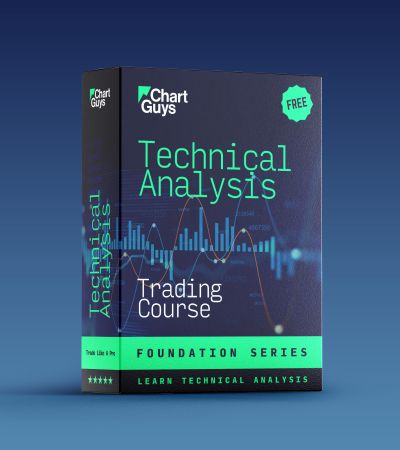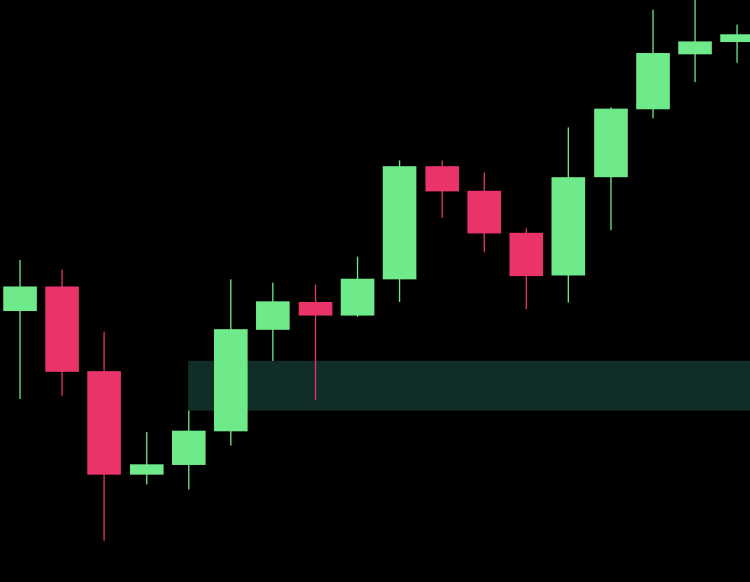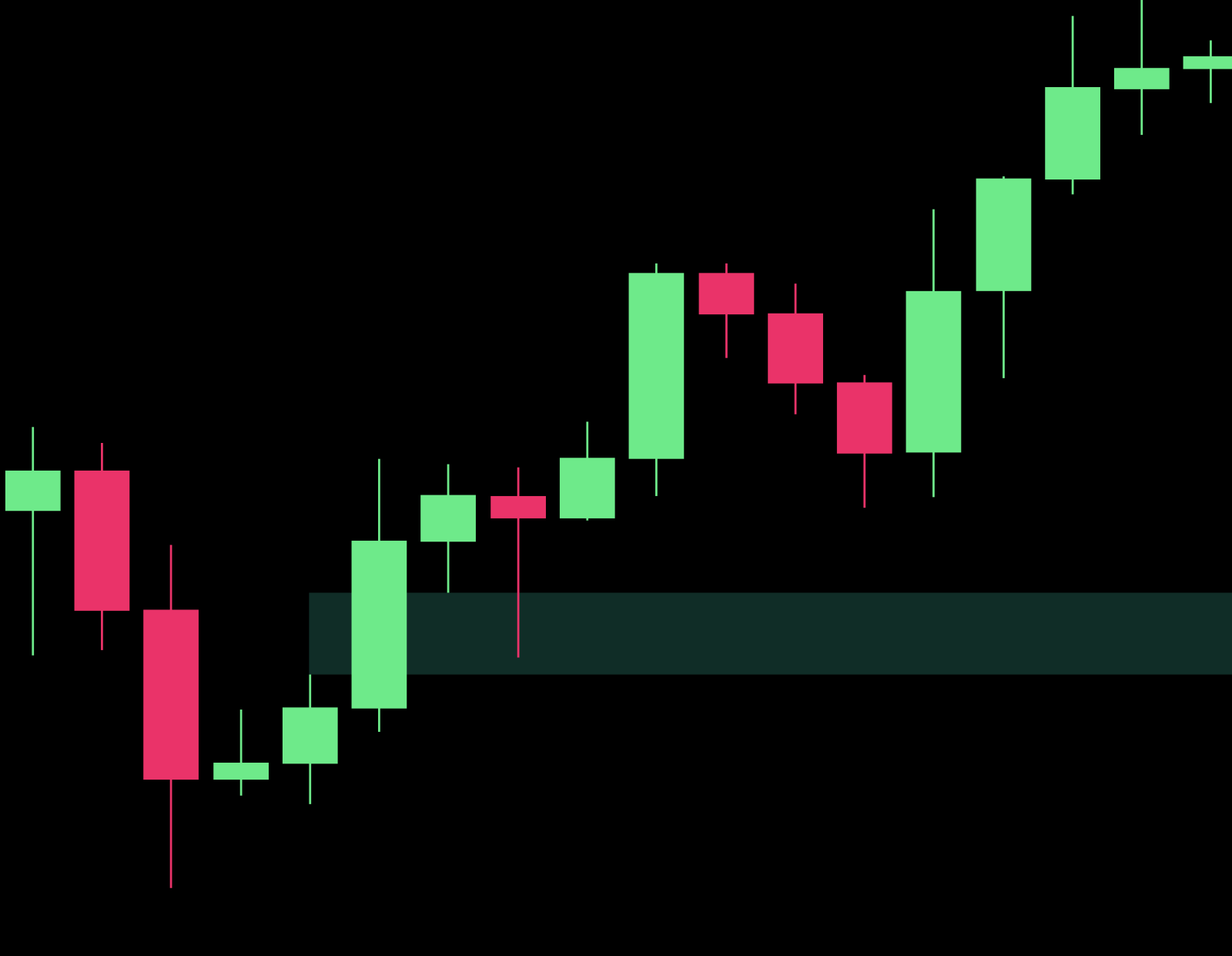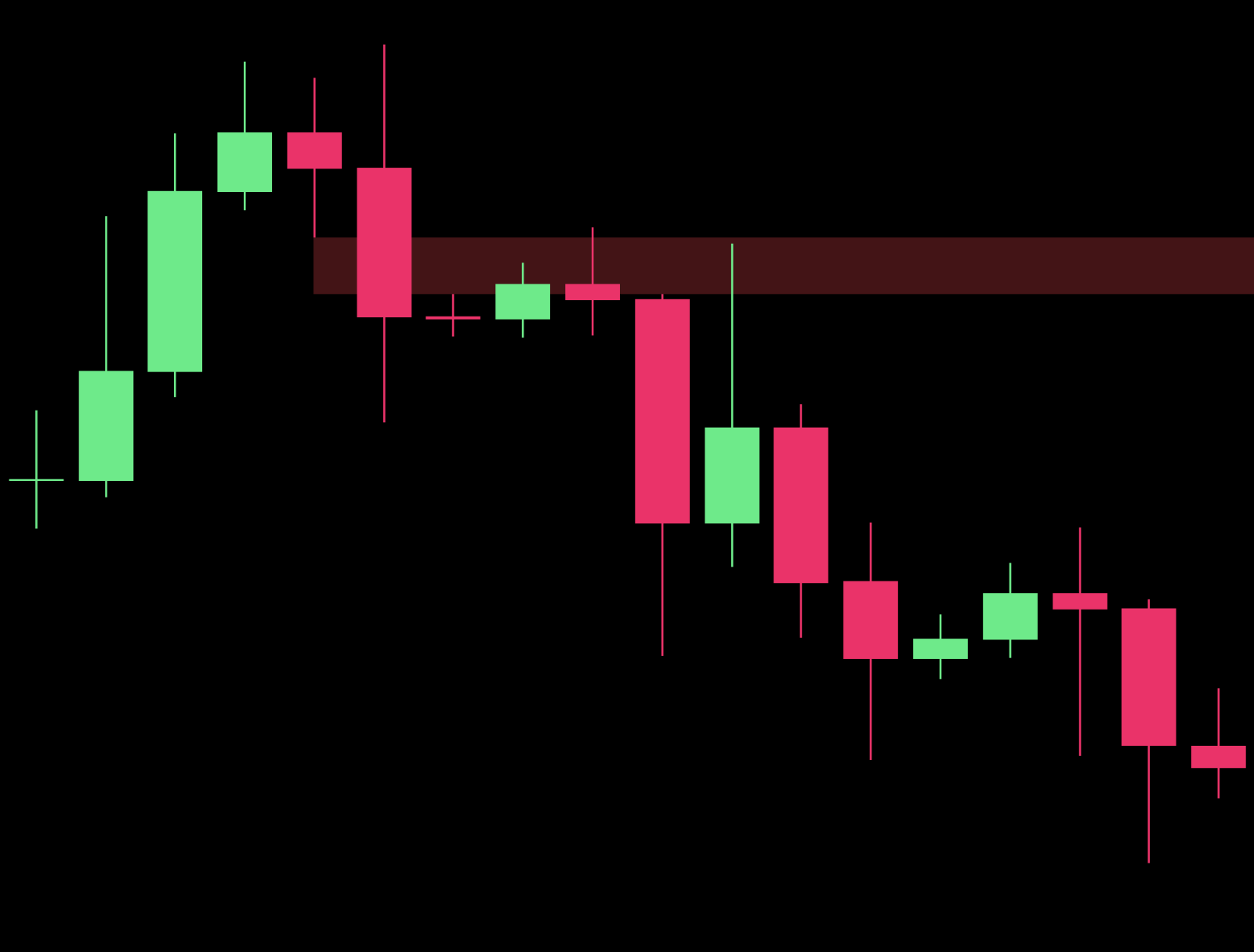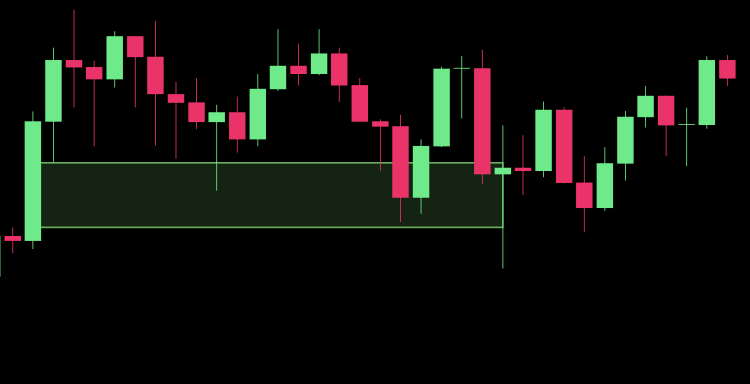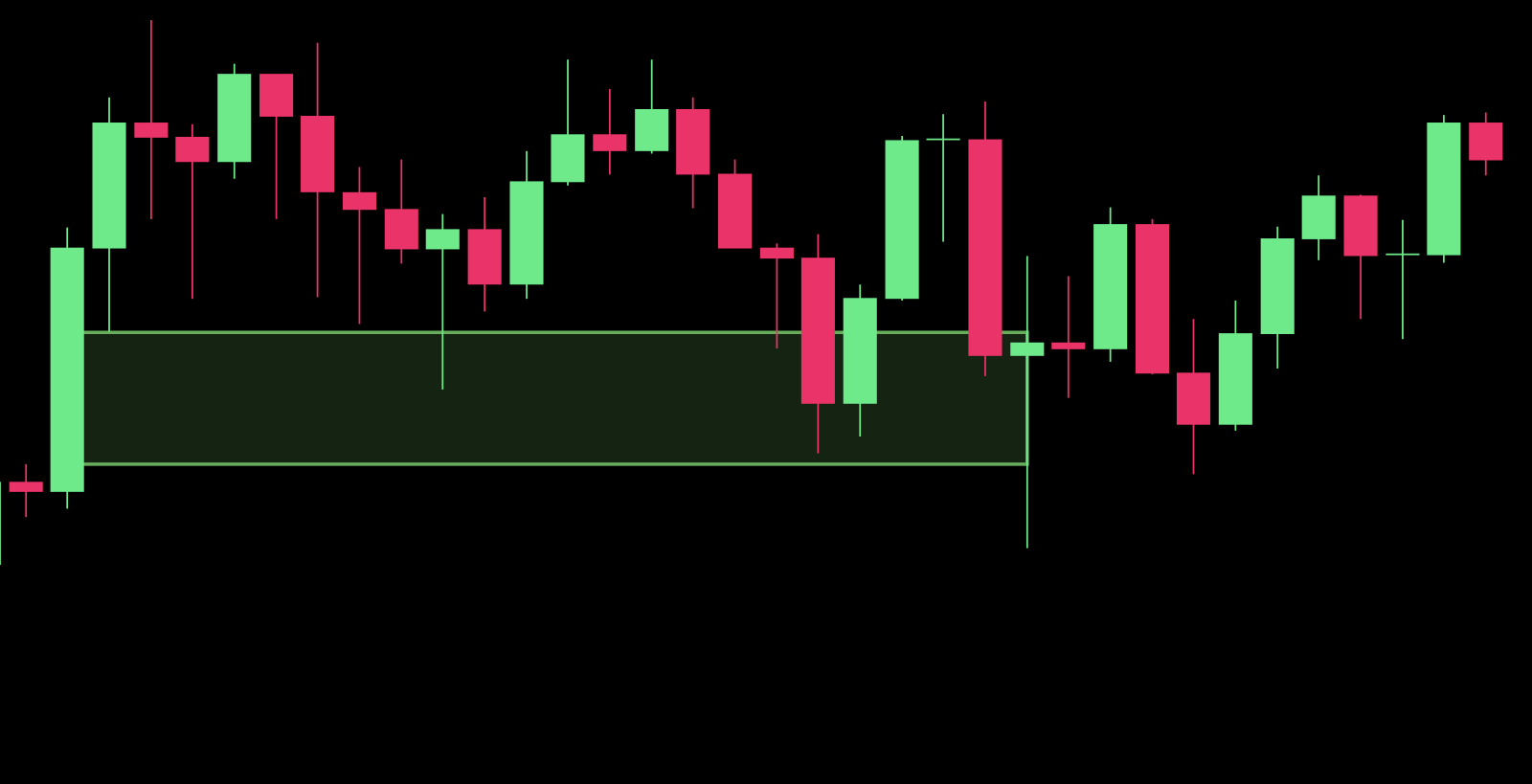Introduction
Market prices flow across our screens in what appears to be smooth waves - but zoom in close enough, and you'll see something different. The movement isn't smooth at all. Like a river flowing over rocks, price action leaves behind empty spaces.
These gaps aren't mistakes. They're natural market phenomena, appearing when price jumps from one level to another without touching anything in between. Traders call them Fair Value Gaps, and they show up in every market, every day.
What makes these "missing pieces" so interesting? They often act like magnets, pulling prices back to fill the void. While no single pattern holds all the answers, these gaps offer valuable clues about where prices might go next - if you know how to read them.
Nature of Fair Value Gaps - The Basic Recipe
A Fair Value Gap isn't just any price jump - it's a specific pattern that forms when institutional money moves with conviction. Think of it as watching three acts of a play, where the second act dramatically changes the story's direction.
For a Bullish FVG:
- First candle sets your baseline
- Second candle shows strong upward momentum with a longer body
- Third candle opens and stays below the second candle's high, creating a gap between its high and the second candle's low
What Creates These Gaps?
These aren't random price jumps. That longer second candle is often institutional money making a power move. When the third candle creates separation from the second, it reveals where large orders moved price so decisively that normal price discovery never occurred.
The Magnetic Effect
Markets have a peculiar habit - they're drawn to test these inefficient zones. The gap between specific points of these three candles acts like a magnet, often pulling price back for a retest. Not always, and not perfectly, but enough to make these patterns worth watching.
Reading the Signs
Valid FVGs must show:
- That decisive second candle - longer than the others
- Proper gap formation between the specific candle points
- Clean pattern structure with no wicks crossing the key levels
- Clear separation in the right places
Why gaps fill: Markets seek efficiency. When institutional moves create these specific three-candle patterns, they leave behind zones where price discovery was incomplete. The market often returns to test these levels, creating opportunities for alert traders.
The Psychology Behind Fair Value Gaps
Fair Value Gaps form when institutional traders execute large orders with urgency. The pattern reveals both their conviction and the market's immediate response to their action.
Understanding Institutional Behavior
The longer second candle in an FVG pattern shows institutional commitment. When large players need to establish or exit positions quickly, they'll accept prices beyond the immediate market range, leading to that decisive move. This isn't random market noise - it's purposeful action with size behind it.
Market Response Dynamics
The third candle reveals how the broader market processes this institutional move. By opening beyond the second candle's range, it shows that regular price discovery was bypassed. This creates a structural inefficiency - a price zone where normal trading never occurred.
Key Psychological Elements
Institutional Intent:
- The longer second candle demonstrates conviction
- The size of the move indicates urgency
- The timing often aligns with key market levels or events
Market Reaction:
- The third candle shows immediate price acceptance
- The gap formation indicates skipped price discovery
- The pattern creates zones the market often returns to test
Why Markets Return to FVGs
These gaps fill frequently because institutional traders often want to test price reaction at these inefficient levels. They're looking for:
- Market absorption at these prices
- Additional liquidity for position building
- Validation of their initial price movement
When you spot an FVG, you're seeing more than just a price pattern - you're witnessing institutional trading behavior and its immediate market impact. Understanding this helps explain why these levels often become significant in subsequent price action.
Anatomy of a Fair Value Gap
If you've spotted a potential FVG on your charts, you're looking at institutional psychology frozen in time. Like a snapshot of big money making decisive moves, these three-candle patterns tell us who's in control and what might happen next.
The Basic Structure
The quality of an FVG reveals the first chapter of its story:
For Bullish FVGs:
- The second candle must show clear upward momentum with a longer body
- The third candle opens and stays below the second candle's high
- The gap forms between the third candle's high and the second candle's low
For Bearish FVGs:
- The second candle must show clear downward momentum with a longer body
- The third candle opens and stays above the second candle's low
- The gap forms between the third candle's low and the second candle's high
Think of these levels as doorways where institutional players made their move. The second candle shows their conviction, while the third candle reveals the market's immediate response. The cleaner these relationships, the stronger the story they tell.
Types of FVGs You'll Meet
High-Quality FVGs: These are the gold standard. They show a decisive second candle, clean gap formation between the proper levels, and no wicks crossing into the gap zone. When you see these with supporting volume, pay attention - they're telling you something important about institutional movement.
Low-Quality FVGs: These show up with weak second candles, messy gap relationships, or wicks crossing into the gap zone. While common, they lack the clean structure that makes FVGs valuable. The institutional footprint isn't clear enough to trade reliably.
Reading Gap Strength
Strong gaps leave clear footprints:
- Clean breaks in price movement
- High volume at formation
- Clear directional bias
- Minimal price overlap
Think of it like reading tracks in snow: you want distinct prints, not a jumbled mess of footsteps. The cleaner the gap, the clearer the signal. When in doubt, wait for gaps that tell their story without confusion.
Reading the Signs
Trading Fair Value Gaps is like being a detective at a crime scene. You don't just walk in and solve the case - you gather evidence, check alibis, and build a story that makes sense. The market leaves clues everywhere, but not all of them matter to your case.
The Evidence Collection
Like any good detective, you need the right tools. A clean price chart and a time frame that matches your trading style work better than a dozen fancy indicators. Your eyes and a simple trend line will spot most gaps - the rest is about context.
Your Basic Tool Kit
- Price action charts - your crime scene photos
- Volume data - your witness statements
- Support and resistance lines - your street map
- Time frames - your case timeline
Spotting False Leads
Remember those old detective shows where the obvious suspect wasn't the real culprit? Fair Value Gaps can trick you the same way. A gap during low volume hours might look promising, but like a false alibi, it doesn't hold up under questioning.
The Context Matters
A detective doesn't solve crimes in a vacuum, and you can't trade gaps without market context. A gap near a major support level tells a different story than one floating in no-man's land. Think of support and resistance as your neighborhood boundaries - they help you understand if you're in a good or bad part of town.
The Usual Suspects
Some gaps show up with bad intentions. Watch out for:
- Gaps during news releases - they often trap eager traders
- Pre-market gaps that fill immediately after opening
- Multiple small gaps that create noise instead of opportunity
- Gaps that form but show no follow-through
Building Your Case
Before you "make the arrest" (enter a trade), build your case with solid evidence:
- Clean gap formation
- Supporting volume
- Clear market direction
- Logical price levels
- Proper market timing
Think of yourself as a market detective rather than a trigger-happy trader. The best cases take time to build, but they're worth the wait. Your job isn't to catch every criminal - just the ones where you have solid evidence.
Making It Work For You
Let's cut through the noise and get practical. Fair Value Gaps offer opportunities, but catching them needs a clear plan. You wouldn't throw your money into a wishing well - so let's build a real strategy around these market moments.
Your trading plan for gaps comes down to four key moves:
- Find your gap and wait for the first retest. Many traders jump in too early, but patience pays here.
- Watch volume and price action around the gap's edges. Smart money leaves footprints - your job is to spot them.
- Set your risk before you trade. Most blown accounts come from "just this once" moments where traders skip this step.
- Match your position size to the gap size. Bigger gaps need smaller positions - they can swing wild before settling.
The beauty of trading Fair Value Gaps lies in their simplicity. You don't need complex indicators or multiple screens of data. You need clean charts, clear rules, and the discipline to follow them. When you find yourself adding layers of complexity, step back. The best trades often come from the clearest setups.
Remember this: every trader wants to catch the perfect move. But consistent profits come from catching good-enough moves, over and over, with solid risk management. That's not exciting - but it works.
Focus on the setup quality, not the potential profit. A clean gap with proper volume will beat a messy gap with bigger potential any day of the week. Trade the setup, not the money.
When Gaps Fail
Let's talk about something traders often skip: when Fair Value Gaps don't work out. No pattern works every time - anyone telling you different is selling something. These gaps fail often enough to keep us humble, and that's actually good news.
Sometimes gaps fill too fast, leaving traders caught in the dust. Other times they don't fill at all, sitting on our charts like abandoned buildings. The market doesn't care about our perfect setups or clever analysis.
The most common failures? News events flip good setups into traps. Choppy markets create gaps that lead nowhere. High volatility periods spawn fake gaps like mirages in a desert. Low volume periods leave gaps untouched, collecting dust on our charts.
Here's what matters: failed trades aren't failures if you learn from them. Keep a record. Study them. You'll start seeing patterns in the failures too. Trading isn't about being right all the time - it's about being right enough times, with smart risk management, to end up ahead.
The Bigger Picture
Think of Fair Value Gaps as pieces in a larger puzzle. On their own, they tell part of a story. Combined with other market tools, they reveal the whole picture.
Building Your Market View
Good traders read markets like ecologists study forests. Every detail connects to something else:
Price Structure: Fair Value Gaps appear within larger market movements. They might show up at the edges of trends, near support and resistance, or during range breaks. Location matters.
Time Frames: A gap on a 15-minute chart means something different than one on a daily chart. Like zooming in and out with a camera, each view adds context to your trading decisions:
- Higher time frames show the market's mood
- Lower time frames reveal entry spots
- Middle time frames connect the two
Tools That Play Well Together
Fair Value Gaps shine brightest when paired with:
- Support and resistance levels
- Trend direction and strength
- Volume patterns
- Price action signals
Think of these tools as layers on a map. Each layer adds meaning, but too many layers create confusion. Keep it simple.
Making It All Work
Start with the bigger moves. Then zoom in for the details. Let the market structure guide you - gaps that align with the overall flow have better odds than those fighting against it.
Remember: Trading isn't about finding perfect setups. It's about finding good setups in the right context. When gaps line up with other signals, that's when magic happens.


